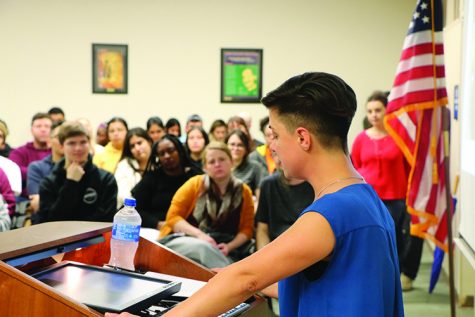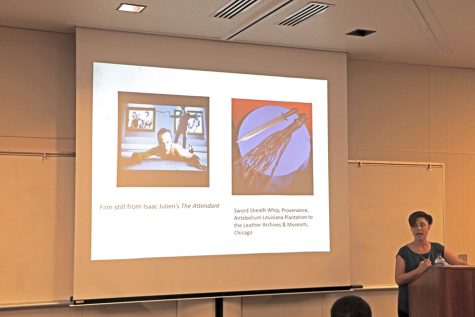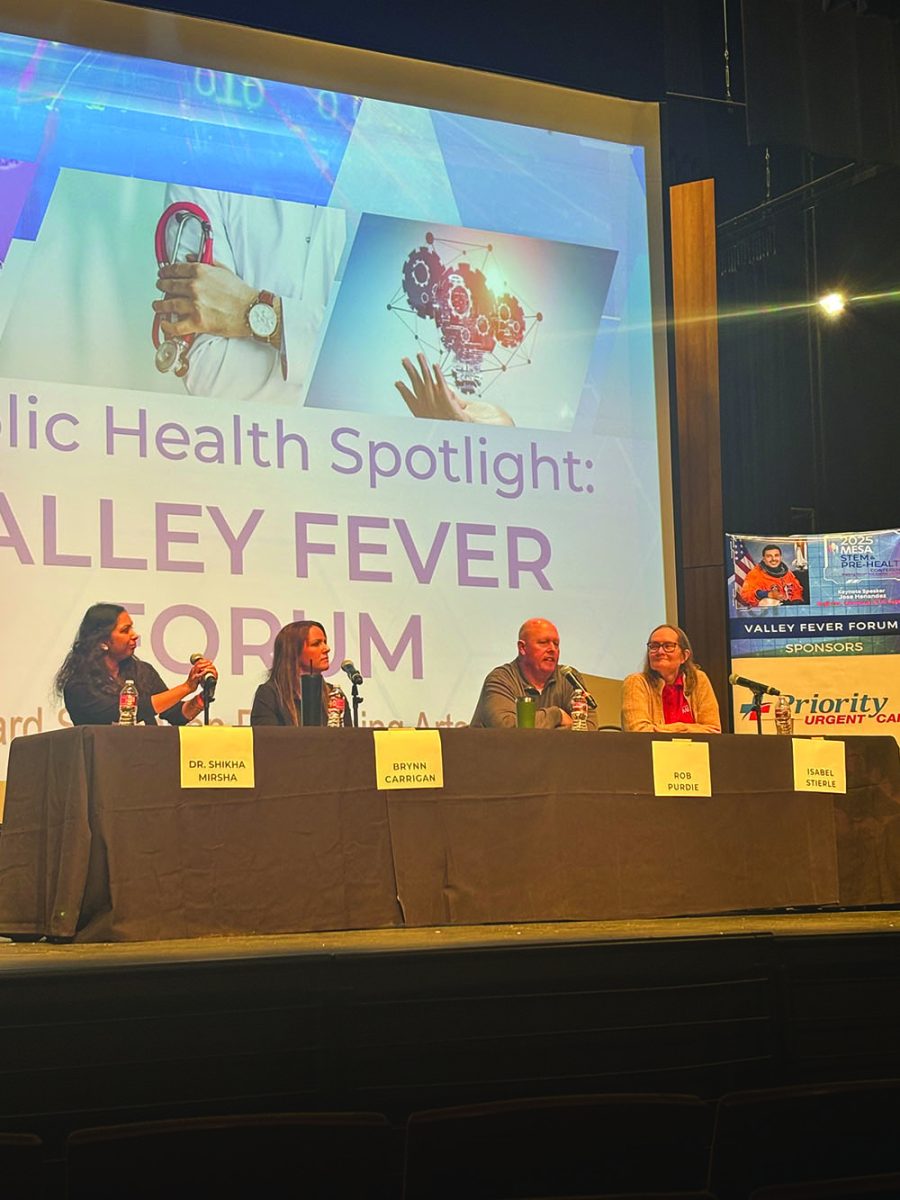Scholar says all museums are sex museums
February 8, 2019

The audience listen to Tyburczy talk about her book and her thoughts on display in museums and how the way they curate and display artwork restrict or censor sexuality.
Jennifer Tyburczy, a University of California, Santa Barbra professor of feminist studies, gave a riveting talk about her book “Sex Museums: The Politics and Performance of Display” at the Bakersfield College Levan Center Jan. 31.
Tyburczy’s book focuses on the formation of Western sexuality, particularly how sexual normalcy and perversity are formed, and what roles it plays in museums and how they use display as a technique for disciplining sexuality.
She explained that her book examines the performative effects of museum display on the history of sexuality in four interrelating themes.
“First it treats the museum context from the inception of the space that we now call the museum in the 19thcentury through the 21stcentury…as a pivotal and highly influential site in the construction of modern sexuality, subjectivity, and hegemonic categories of normalcy and perversity,” she said.
Her second theme explores sex museums as explicit sexual spaces in the public sphere that combine pedagogy and public entertainment to redefine what sex means.
The third theme examines the successes and failures of sex museums, and described the pleasures and dangers associating with exhibiting marginalized sexual subjects.
Finally, Tyburczy explained that the fourth theme propose the seemingly paradoxical assertion that all museums are already sex museums, “even as a diverse array of sexualities have been historically marginalized from…the museum’s vision of itself,” she said.
“All museums are sex museums because there are sexual messages embedded in all museums, and they are so repetitive they have become normative, that we don’t regard them as sexual because they recede into the background…” Tyburczy said.
She also stated most museum exhibits assume white, patriarchal heterosexuality, and that national traditional structures of intimacy, gender, and race represent sexual culture for their visitors.
“I use sex as a diverse, dynamic, interactive and interdependent social relation, cultivated by the ways in which…spaces, and objects…interrelate,” she said.

Tyburczy give a brief history of the Leather Archives & Museum in Chicago and talk about “queer curatorship,” which she defines as applying a queer antinormative point of view.
She explained sex as not solely a relationship between human bodies, but also a relationship between bodies and objects, and the various ways in which those bodies are invited, coerced, and positioned around and towards objects.
In her presentation, Tyburczy also spoke about the many instances where artists who exhibit sexually explicit art experience criticism, threats,censorship, vandalism, and violence.
She talked about how sex has consistently been used as a political tool to silence minority voices on issues such as race, gender, disability, globalization, and critiques to capitalism and neoliberalism.
“Exhibiting the sexual modern like the other chapters… [in my] book, show how normative anticipations of who constitutes the primary museum audience dictate the domain of the showable, even in museums dedicated to the display of sex and sexuality and nothing else,” Tyburczy said.
Tyburczy believes the display of sex in museums are a performance that use “unique effect or emotion and embodies qualities of sex to test and expand the boundaries of social and political discourse.”
“While sex museums continue to enact practices of display and spectatorship, unavailable to most museums, they do so within a political and economic paradigm where business concerns often dominate the domain of the sale,” she said.






Kathleen Alfaro • Feb 11, 2019 at 3:37 pm
Very interesting.